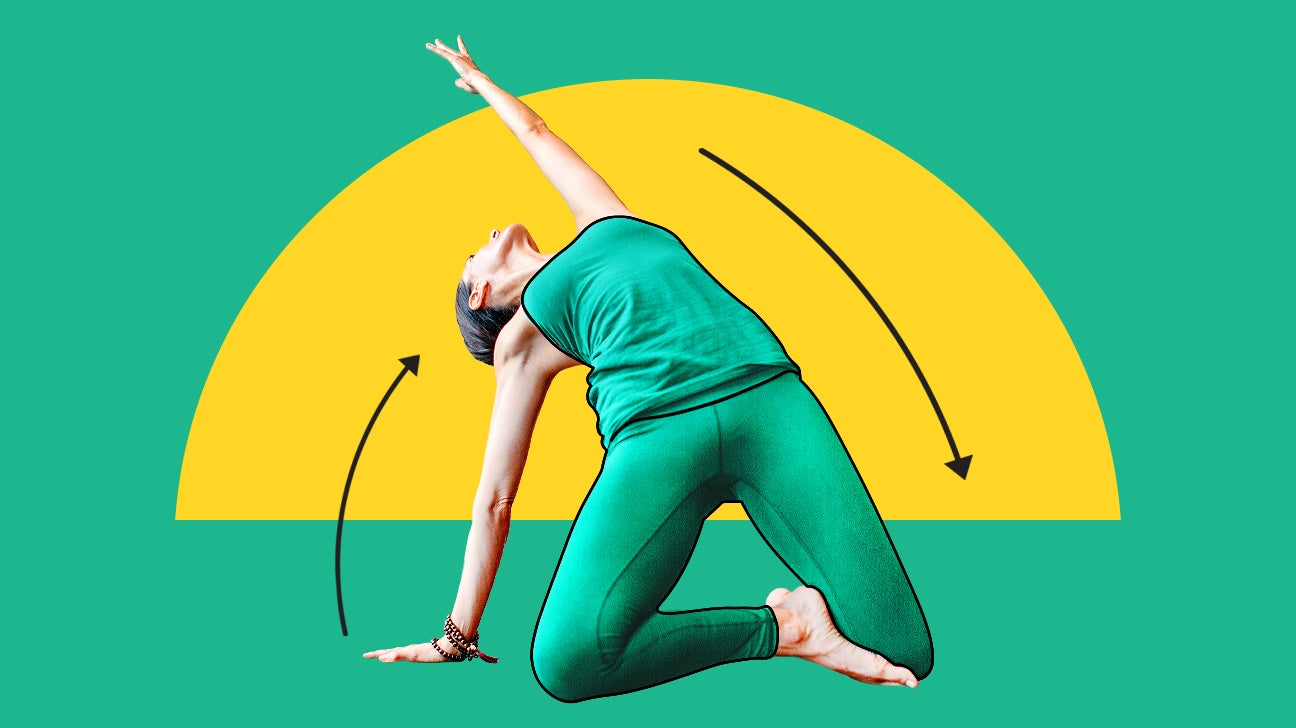Animal Flow, Primal Play, and Primal Movement may sound like rough and rowdy sex positions, but they’re actually workout routines based on an ideology that’s like returning to the jungle. And they are about to hit it BIG, post-pandemic.
Read and learn about the upcoming roaring 2020s.

Animal-inspired movements
Many animal-inspired movements and workout routines are based on different forms of crawling.
“The majority involve getting down on the ground on your hands and feet, and moving in that position,” says physical therapist Grayson Wickham, DPT, CSCS, founder of Movement Vault, a digital movement education platform that incorporates animal-inspired movements into their routine. Yep, kinda like a baby, kinda like an animal. (This is known as Quadrupedal Movement).
Common animal-inspired movements include:
“Animals, obviously, are part of the inspiration. But these movements are also inspired by bodyweight disciplines such as gymnastics, Parkour, breakdancing and hand balancing,” says innovative fitness educator and movement coach, Mike Fitch, creator of Animal Flow, an animal-inspired workout regime.
These movements can be done à la carte-style and used as tools for warmups, cooldowns, performance training, or mobility work. “Or, they can be linked together into continuous movement sequences known as flows,” says Fitch.
Animals moves aren’t just for kiddos
Having a flashback to crab walking up and down your school’s gymnasium at 8 years old? Don’t let that trick you into thinking animal-inspired movements should be forgone after middle school graduation (lol).
“People of all ages and fitness levels can benefit from crawling,” says Wickham. “Whether you’re 5, 15, 25, 55, 85, whether you’re a pro athlete or you’ve never worked out in your life, you can benefit from doing animal inspired movements.”
So… why are animal-esque workouts on the rise now?
Because they are an antidote to the sit-all-day lifestyle that was established pre-pandemic, and further solidified in quarantine.
When physical distancing orders were put into place, those of us privileged enough to work from home suddenly lost out on a whole lot of walking/moving/grooving time.
All that time we spend walking was suddenly *whoosh* gone. For example: walking from the parking lot to the office and from the office back to the parking lot.
And in its place was a whole lot of sitting.
“Our bodies conform to the positions we spend the most time in,” says Wickham. And according to him, when we sit for long periods of time, our core slumps, our upper and lower back rounds, and our neck juts forward.
“When someone is slumped over all day, day after day, this leads to decreased body awareness in and around the core muscles, loss of core strength, muscle tightness, and mobility restrictions,” says Wickham.
And that’s where these animal-inspired movements come in…
When performed correctly, these movements can help counteract some physical woes people have experienced after this year of sitting.
Strength, power, speed, and more
“Almost all animal-inspired movements use the full-body, requiring you to not only hold your own bodyweight, but to control it as it moves through space in different planes of motion,” says Fitch. These programs are “designed to improve all of your physical abilities like strength, power, speed, endurance, coordination and mobility.”
1. Improved mobility
These movements force (nay, encourage!) you to work your shoulders, wrists, hips, and ankles through their full range of motion.
“Whether you are a weight lifter, a Cross Fitter, a martial artist, a triathlete, a surfer (or many other things), being able to move all of your [joints] easily and freely in different directions is going to help you in your sport, as well as in injury prevention,” says Fitch.
2. Improved coordination
Animal-inspired movements work on something called reciprocal movement.
Reciprocal movement = movement that involves moving your opposite arm and leg. So, while you move your right arm and hand, you’re also moving your left leg and foot.
Doing reciprocal movement can improve coordination, according to Wickham.
“People often look at these animal-inspired movements and think they look easy,” he says. “But only about 20 percent of people have the coordination to do the movement right off the bat if they’ve never tried it.”
3. Increased core strength
“Crawls are amazing for improving core stability, strength, and activation,” says Wickham.
That’s because when you’re down on the ground, in order to shift side-to-side or up-and-side, your core HAS to engage.
After all, your midsection translates strength to your limbs so that your arms and legs can do their thing.
4. Reduced injury-risk
Animal-inspired exercise programs entail moving through all planes of motion: sagittal (forward and backward), frontal (lateral, left and right), and transverse (rotational).
This, says Fitch, “can help people reduce their injury-risk in other sports where they are constantly training in a single-plane of motion, or even overtraining in some areas.” For example: marathoners and CrossFit athletes.
5. Improved mindfulness
“There is also a mindfulness aspect to [moving this way],” says Fitch. It is difficult to be thinking about anything else when practicing animal-inspired flows, so you are forced to focus on where your body is and where you want it to go next,” he says.
How to tap into your inner animal
Honestly, any exercise program that touts its ability to improve your mobility (like Movement Vault, RomWod, The Ready State) is probably going to include some animal-inspired movements.
However, if you’re looking for an animal-inspired flow (aka workout) — as opposed to a stretch sesh — your best bet is to sign up for a program like Animal Flow, Primal Play, Primal Movement, or whatever cleverly-named program launches next.
“Exactly how long it will take to feel better after incorporating these movements will depend on what kind of pain, injury, weaknesses and mobility issues you might have,” says Wickham. But benefits can come as quick as 1 to 2 weeks, according to Fitch.

0 Commentaires